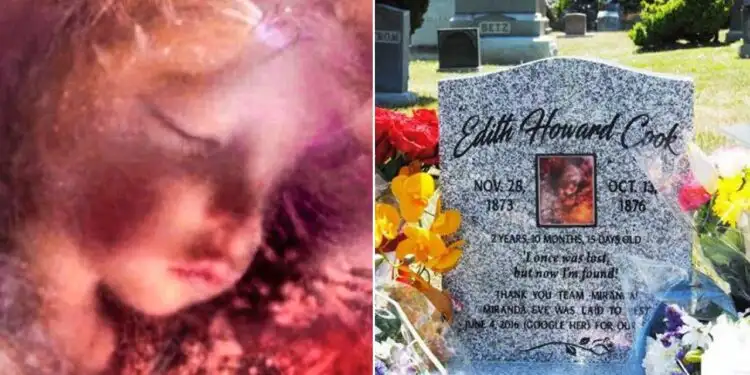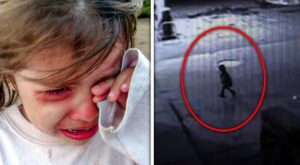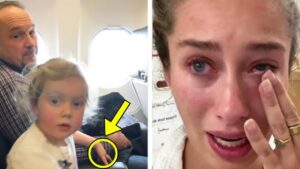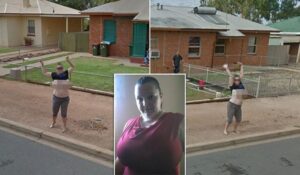Toddler buried in 1870s found in casket under home. The story of a small glass cast iron casket began in the 1870s at San Francisco’s Odd Fellows Cemetery. About 140 years later, last May, the story came back. A construction crew at a home on Rossi Street near the University of San Francisco found the sealed casket inside. They found a little girl with long blonde hair wearing a long white lace dress. She had a cross made of flowers on her chest and she was nicknamed Miranda Eve. Now we know that her real name is Edith Howard Cook. Alyssa Davey, a genealogist and founder of the Garden of Innocence Project, reburied the little girl in Coma last year. Davey says she was also determined to discover the real story of the girl, including the date of her death.
Through the use of DNA, we now know the girl’s identity and have tracked down a living relative. Her name was Edith Howard Cook, the second-born child and first-born daughter of Horatio Nelson and Edith Scoofy Cook. She died on October 13, 1876, at the age of two years, 10 months, and 15 days, and was buried in a family plot in the Yerba Buena section of the Odd Fellow Cemetery on October 15, 1876. Funeral home records indicate the cause of death was merasmus, a term used in the 1800s for severe undernourishment, a condition which could have had a number of underlying causes unknown or not fully understood at that time.
Given what is known today about the late 1800s urban living and infectious diseases, the most likely cause of her merasmus was a contractor doing remodeling work on the residents of John and Erica Carner in the Lone Mountain neighborhood of San Francisco uncovered the casket while excavating a section of their backyard. The medical examiner was notified and, after opening the casket, determined that further disposition of casket and the young girl inside was the responsibility of the Karners.
The casket was made of metal, 37 inches in length, with two viewing windows in the lid. It was tightly sealed, thus preserving the body of the young girl it held. Through the office of the public administrator, the Karners were put in touch with Elissa Davey, founder of the Garden of Innocence, who arranged to take custody of the young girl. She then arranged for transportation and care of her in her original casket until reburying could be arranged. A new casket was built into which the original casket was placed. The young girl, nicknamed Miranda Eve, was reburied at Green Lawn Memorial Park in Kalmah, California, on June 4th, 2016, at a service attended by about 140 people. Another memorial will be held on June 10th to honor Edith by holding a ceremony while knowing her true identity. The memorial service will be held on June 10, 2017, at Green Lawn Memorial Park, 1100 El Camino Real in Kalma. The memorial service will begin at 11 am and will be open to the public.
« I actually asked my girls, I said, ‘You know, if you were to name a beautiful little girl, what would it be?’ And Katie, without even questioning, said, ‘Miranda,’ » she was buried there before it was a backyard, of course. All the residences in that neighborhood were built on the former side of a cemetery owned and operated by the Independent Order of Odd Fellows. The cemetery accepted burials from 1865 until about 1902. The interred were exhumed in the early 1930s and transferred to Green Lawn Cemetery in Colma, California, for unknown reasons. Edith Miranda was left behind.
The research effort was complex, consisting of four general phases which often overlapped. A successful completion of each was needed to obtain a 100% positive identification. A map or diagram of the cemetery as it existed when burial ceased was sought; initially, none was found. A scalable plan for the development of the cemetery dating back to 1865 was discovered at the Bancroft Library at the University of California, Berkeley. Using that as a base, researchers initially identified two sections of the cemetery most likely corresponding to the location of the residence. Subsequently, several historical maps, including original cemetery section drawings, were digitally layered atop one another and cross-referenced against photographs to reveal a clearer picture of which family plots likely intersected with the location of the discovery.
Examinations of Miranda Eve before reburial suggest a child aged two to four years at death. DNA preserved in her hair showed she was female. Coffin style indicates burial about 140 to 150 years ago. Any potential candidate had to qualify on all three counts. Surviving cemetery records and archived obituary notices that were available were used to research these criteria. In addition, she would have had to be buried in a casket matching the one which was discovered. Confirmation of this information depended on finding surviving funeral home records. Research on internments from the two cemetery sections narrowed the search to two highly likely candidates. Standard genealogical search methods were used to find and examine a large number of records for relevant information, most of which came from online sources of genealogical records. This was a labor-intensive effort; more than a thousand hours of research were logged by three primary researchers, occasionally aided by additional volunteers, to complete this phase of the project.
Living family descendants were eventually found for both candidates. Both descendants were contacted and agreed to provide DNA samples for comparison. One of these showed a good match to DNA recovered from the hair of Miranda Eve. Strands of hair were obtained from Miranda Eve before her reburial for DNA testing. Analysis of nitrogen isotopes conducted at the University of California, Davis, indicated that she was sick from some type of disease and stopped eating, eventually passing away. This is consistent with a chronic illness, unlike, for example, smallpox or an accident, where death was typically within weeks, and with the cause of death of merasmus indicated in funeral home records for Edith Howard Cook found later.
Whatever the specific cause of her illness, a bacterial infection seems most likely. It is certain that Miranda Eve died from the wasting which was characteristic of a diagnosis of merasmus. Her hair was also analyzed for traces of medicine, such as morphine and cocaine, which were common components of medicines in the late 1800s, but the existence of these compounds could not be documented. Analysis of nuclear DNA, which is inherited from both parents, confirmed that Miranda Eve was a girl. No Y chromosome DNA fragments are present and suggested ancestral origins in Western Europe. Her complete mitochondrial DNA, inherited only maternally, was assembled, and it was found that Miranda Eve carried an I1a1e haplotype, most common on the British Isles.
At the University of California, Santa Cruz, an analysis was performed, comparing the DNA extracted from the hair sample with that obtained from the living male descendant of the second candidate, Edith Howard Cook. Peter Cook got a saliva sample from him. We’re confident enough to say, you know, 99.9% certainty that a relative of this particular person, the living relative, is Peter Cook. Edith’s grand-nephew, Peter Cook, is a direct descendant of her older brother, Milton H. Cook. He lives in the Bay Area.
DNA was extracted from Miranda Eve hair samples in the clean room facilities at the university’s paleogenomics lab using standard ancient DNA techniques. After sequencing data was collected from about 10% of Miranda Eve’s genome, from that 10% of the sample, we were able to compare this to a candidate relative and it turns out that the two are about 12.5% identical. The data show typical patterns of old or ancient DNA. The DNA fragments were short, about 50 base pairs each, and showed evidence of chemical degradation. The DNA sequence from Peter Cook was compared to the Miranda Eve data by examining the rate of matching at positions of rare DNA variants across the genome. Several long contiguous sections were found where Peter Cook and Miranda Eve match at these rare genetic variations at a rate expected for two people who share a very recent common ancestor. The Miranda Eve data had no such matching segments to dozens of negative controls, that is, DNA data from unrelated people. Further analysis of the matching regions confirmed that these segments are bona fide identity by descent regions, regions of the genome co-inherited from the same person, that is, the parents of Miranda Eve. If you liked the story, please give it a thumbs up and consider sharing it with someone who may find it interesting.





